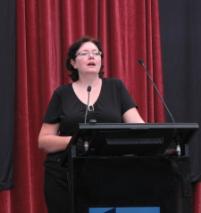Animal hoarding interventions 'should include psychological guidance'
Published on 20 April, 2011
One pristine room with a rack of carefully starched nursing uniforms and the other rooms full of filth created by dozens of dogs locked inside the house...
That is one of the examples of animal hoarding cited by CQUniversity researcher Dr Tania Signal, who is advocating sensitive solutions to the issue.
Dr Signal says resources are always a consideration but it would be best if a trained counsellor could be embedded with police or council authorities called in to deal with severe cases of animal hoarding.
"They require psycho-social intervention as recidivism is almost certain," she says.
The researcher has been examining the different psychological patterns relating to various types of animal hoarding, which is increasingly being recognised as a distinct syndrome, quite different to obsessive compulsive disorder and needing different approaches than those for inanimate object hoarding.
"Animal hoarding is possibly best thought of in relation to attachment disorders and/or resultant personality disorders. From the case histories, most (but not all) animal hoarders are older, single, women who tend to be socio-economically disadvantaged or isolated," Dr Signal said.
"In many cases, animal faeces and urine accumulated in living areas; in more than a quarter of cases, the hoarder's bed was soiled with faeces or urine. Dead or sick animals were often discovered yet in most cases hoarders did not acknowledge the problem."
Dr Signal said animal hoarding could be defined as a compulsion to obtain and control animals, coupled with a failure to recognise their suffering.
She said psychologists were recognising three types of hoarder - the overwhelmed caregivers, the rescuer hoarder and the exploiter hoarder - and each had characteristic psychological issues.
"For example, the overwhelmed caregiver's self-esteem is likely linked to their role and the rescuer hoarder thinks they are the only one who can provide care, whereas the exploiter hoarder lacks empathy for animals and tends to have sociopathic characteristics."
Dr Signal said the typical overwhelmed caregiver could be open to persuasion about downsizing and the possibility of legal action could be enough to deal with rescuer hoarders, whereas criminal prosecution might be needed to deal with exploiter hoarders.
The researcher has been tracing developmental factors with a possible model describing the 'fertile soil' for mental health problems, various traits associated with hoarding and the animal-neglect and self-neglect outcomes.


